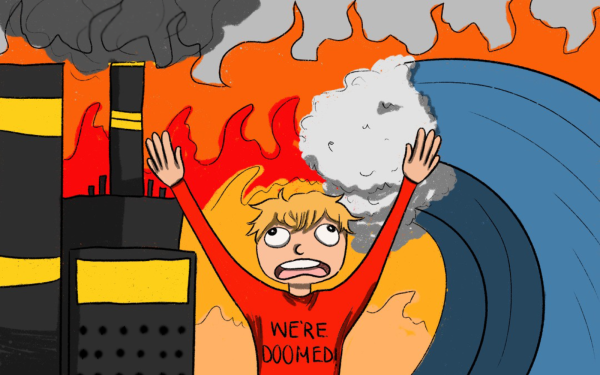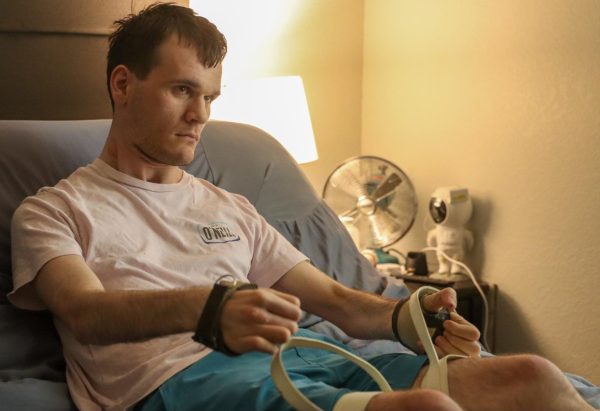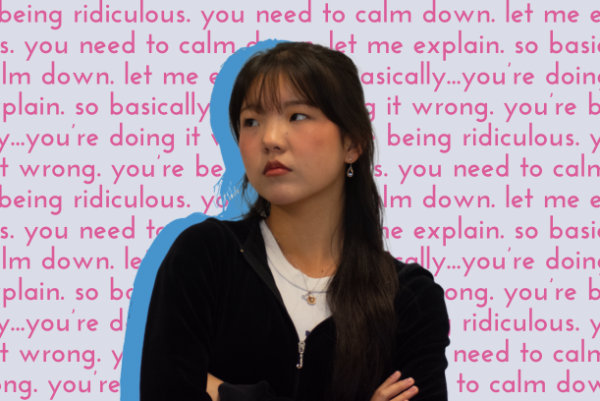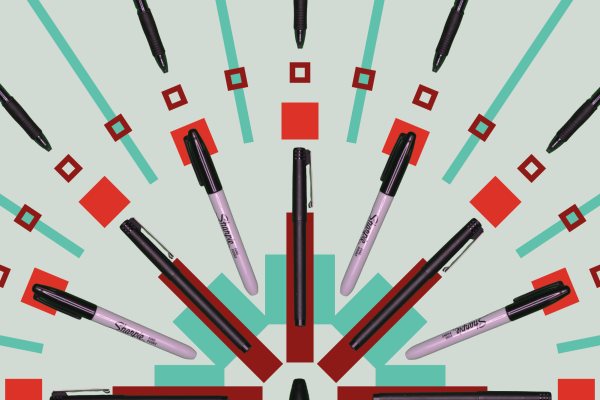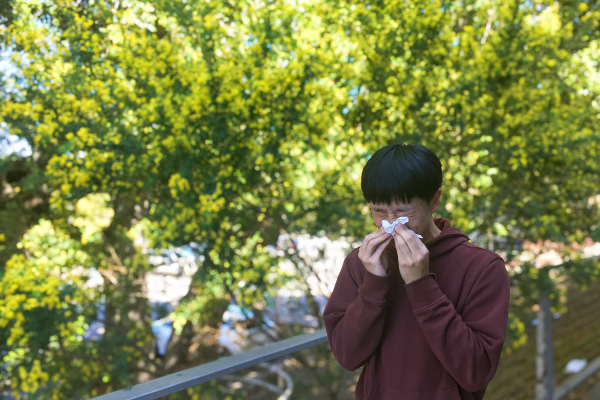How Mental Health and Art Correspond at an Arts-Focused School
THE VAN GOGHS’ AND KURT KOBAINS’ OF LINCOLN PARK PERFORMING ARTS CHARTER SCHOOL
April 30, 2021
Vincent Van Gogh evidently experienced manic depression for a long period of his life. Most are familiar with the story of how he cut his ear off and how he later committed suicide. But Vincent Van Gogh is also one of the most legendary, talented painters in art history with such famous pieces as Starry Night and his infamous self portrait along with a whole museum dedicated to him, his work, and his life.
We see this phenomenon often within highly artistic, creative people. Take other historic painters like Georgia O’Keefe (depression) and Michelangelo (depression, anxiety, and obsessive compulsive disorder). Kurt Kobain, frontman of Nirvana, famously committed suicide at twenty-seven after a lifetime of attention deficit disorder and bipolar disorder.
Lincoln Park Performing Arts Charter School is a school entirely dedicated to talented artists with majors such as music, media, musical theatre, dance, and writing and publishing. Students who are admitted to this school must go through an interview process and display their skills with a portfolio or an audition.
The school operates on a fifty-fifty basis with students traveling from math classrooms to the art studio at any given time. It thrives on stage-born musicals and poetry readings and concerts and screenings. Everyone is an artist at Lincoln Park.
With these trends in mind — that being, the trend of highly artistic and creative people dealing with mental health illnesses or conditions — Lincoln Park students were interviewed about the relationship their mental health has with their art.
A demographic survey, conducted by The SIREN Media Group, assessed about a third of the school population. Out of this group (9th-12th grade), 35 percent deals with a mental illness or condition. Conditions included (but are not limited to) depression, anxiety, ADHD, bipolar disorder, obsessive compulsive disorder, mood disorders, post-traumatic stress disorder, eating disorders, mania, and mood disorders.
Statistically, the United States as a whole has seen an alarming increase in mental illnesses in teenagers within the past decade. According to the National Institute of Mental Health, nearly 50 percent of all adolescents have some sort of mental illness or condition.
If the Demographic Survey had assessed the entire population of Lincoln Park and followed the same trend, Lincoln Park would likely meet that statistic head on, or even surpass it. Compared to other schools, Lincoln Park is rather small with a student body of about 700 students.
Paige Purcell, a seventeen-year-old musical theatre major from Cheswick, has been diagnosed with severe general and social anxiety.
Purcell noted that “hints” of her mental conditions were apparent throughout her entire life and led to bouts of self-harming and neglecting to eat.
When it comes to her art-form, however, Purcell considers it her safe space.
“It doesn’t matter how I feel,” she says. “I can always rely on singing that song or attending rehearsal to return me to myself.”
For Purcell, singing and musical theatre is what pulls her from her struggles, not what hinders it.
On the other hand, Paige’s sister, Zoe, a ninth-grade dance major, finds that her depression and anxiety contribute to a lack of motivation that can make dancing difficult for her.
“Depression can really take over … My creativity definitely corresponds with the highs and lows of my mental health. If I’m having a good day mentally, I will often feel much more creative and productive [whereas] if I’m having a not so good day, I just want to lay in bed and do nothing.”
Abby Mitchell, a tenth-grader from Robinson, shares similar experiences to Zoe Purcell.
“Structurally in the world of dance, there isn’t much room for days with little motivation or energy, or a low attention span, all of which I experience nearly daily.”
For Mitchell, her lows (in correlation with anxiety, depression, and seasonal depression) are also her creativity’s lows.
Mitchell does find, however, that when she can simply focus on the movement of dance itself — as opposed to all of the extra factors in a dance rehearsal or show — she experiences relief. She also doesn’t necessarily believe that one’s art form has to be one or the other.
“Being in the arts as much as LP students are, we can often find both stress and relaxation in our art,” says Mitchell. “I think it’s good to notice that it doesn’t have to be perfectly stress relieving, and you don’t have to always fully enjoy everything. Because it’s so broad, not one person will enjoy every single class or every single piece they create. But I think what keeps us here is the fact that even if sometimes it is stressful, you’ll find that eventually you can relax into your work as well. It’s a harsh reality to know that you will never always enjoy your art in every situation, but it’s comforting to know it’s still there with you as something you enjoy doing. Our mental health can really vary based on our surroundings, but mental health isn’t linear, just like our art. One day can be a good day, the next bad, and the following just okay. I think that’s something we all need to accept.”
The general consensus seems to be similar to Mitchell’s sentiment: there isn’t one. Artists can be on either side of the spectrum, flat in the middle, or bounce from side to side. One person might find that their creativity is what makes them feel better, while another struggles with their creativity when in a negative headspace. Ideas might spawn from a low point or become present at a high one. It all depends on the artist.
Because Lincoln Park is an arts-oriented school, one might suspect that its mental health services would be more adequate than that of other schools, given the mental health trends we see in highly creative people.
“Lincoln Park is very much focused on trying to get the student(s) help and [comfort.] Ms. Price (one of our school guidance counselors) has helped greatly for me and other students when it comes to mental health, especially during COVID-19. I think a lot of artists see mental health in a different way than other people, so I do think the way people with mental disorders are treated here has something to do with LP being an art centered school,” says Toby Faye Van Winkle, a junior media major from Wexford who deals with post-traumatic stress disorder, depression, anxiety, and anorexia.
Another junior media major, Rori Bowman of Slippery Rock, somewhat agrees.
“The teachers at LP are a lot more empathetic and understanding than at my old school, but the ways the schools themselves handle it are about the same. I think there are a lot more kids with mental illnesses at LP because typically artists deal with some kind of struggle that leads to creating as a coping mechanism.”
Zoe Purcell thinks that Lincoln Park’s treatment of mental health is a big improvement from her home district, and she believes that is so because of Lincoln Park’s art focus.
“From what I remember, my old school really didn’t care about mental health. I remember going to the principal because of bullying one time, and they didn’t do anything about it. I do think that the fact that Lincoln Park is more catering towards mental health has to do with the fact that it is an art centered school.”
Despite the struggles these students face with their mental illnesses and conditions, they all maintain the capability to create incredible works of art.
Van Winkle has even written a short screenplay entitled Cherry Blossoms, that is entirely in correlation with their experience with trauma and post-traumatic stress disorder.
“[Cherry Blossoms] is about mental illnesses and how we aren’t them.”
This story was originally published on The SIREN on April 29, 2021.






























![IN THE SPOTLIGHT: Junior Zalie Mann performs “I Love to Cry at Weddings,” an ensemble piece from the fall musical Sweet Charity, to prospective students during the Fine Arts Showcase on Wednesday, Nov. 8. The showcase is a compilation of performances and demonstrations from each fine arts strand offered at McCallum. This show is put on so that prospective students can see if they are interested in joining an academy or major.
Sweet Charity originally ran the weekends of Sept. 28 and Oct. 8, but made a comeback for the Fine Arts Showcase.
“[Being at the front in the spotlight] is my favorite part of the whole dance, so I was super happy to be on stage performing and smiling at the audience,” Mann said.
Mann performed in both the musical theatre performance and dance excerpt “Ethereal,” a contemporary piece choreographed by the new dance director Terrance Carson, in the showcase. With also being a dance ambassador, Mann got to talk about what MAC dance is, her experience and answer any questions the aspiring arts majors and their parents may have.
Caption by Maya Tackett.](https://bestofsno.com/wp-content/uploads/2024/02/53321803427_47cd17fe70_o-1-1200x800.jpg)
![SPREADING THE JOY: Sophomore Chim Becker poses with sophomores Cozbi Sims and Lou Davidson while manning a table at the Hispanic Heritage treat day during lunch of Sept 28. Becker is a part of the students of color alliance, who put together the activity to raise money for their club.
“It [the stand] was really fun because McCallum has a lot of latino kids,” Becker said. “And I think it was nice that I could share the stuff that I usually just have at home with people who have never tried it before.”
Becker recognizes the importance of celebrating Hispanic heritage at Mac.
“I think its important to celebrate,” Becker said. “Because our culture is awesome and super cool, and everybody should be able to learn about other cultures of the world.”
Caption by JoJo Barnard.](https://bestofsno.com/wp-content/uploads/2024/01/53221601352_4127a81c41_o-1200x675.jpg)





